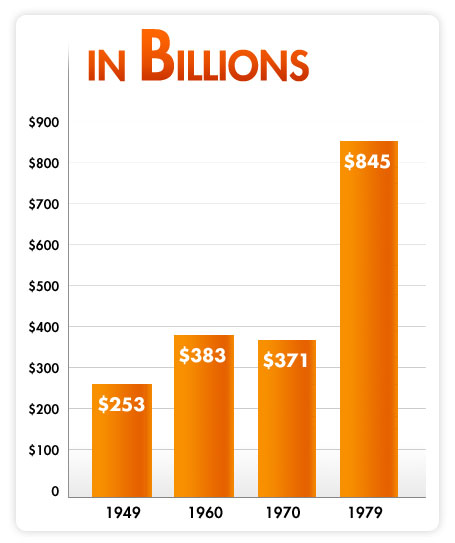
The 1950s to 1980s
After the end of World War II, the U.S. economy grew.
- 1946-1949: The Government collected enough in taxes and other fees so that there was more money than needed to pay for programs - meaning that there was a budget surplus. Even with that surplus, the debt remained large - never falling below $250 billion.
- 1950: The U.S. got involved in the Korean War. This caused growth in military spending, but the debt only grew a small amount.
- 1960s: The U.S. debt increased a great deal as the Government started many new programs to help the poor, improve education, and provide better transportation. There were also programs to fight crime and drug abuse, as well as end racial discrimination. The U.S. also took part in the Vietnam War. The debt increased to $382.6 billion by 1960.
- 1970s: Debt continued to grow as receipts failed to keep up with spending.
- The economy also faced quickly increasing gas and oil prices, and rising inflation (an increase in prices for the things you buy).
By 1979, the debt reached more than $845 billion. During the 1970s, the amount of the Government’s debt sold to foreign governments increased a great deal. By 1973, foreign governments owned $28.5 billion of the U.S. Government’s debt.
- 1980s: Debt continued to grow and reached nearly $3 trillion by 1989. Personal debt also grew during this period. People borrowed more money from banks to buy houses and began to rely on credit cards to buy the things they wanted.

- 1946-1949 - The U.S. had a budget surplus.
- 1950 - The U.S. enters the Korean War.
- 1960 - Debt increases to $382.6 Billion.
- 1979 - The debt reached more than $845 billion.
- 1989 - The debt reached nearly $3 trillion.








